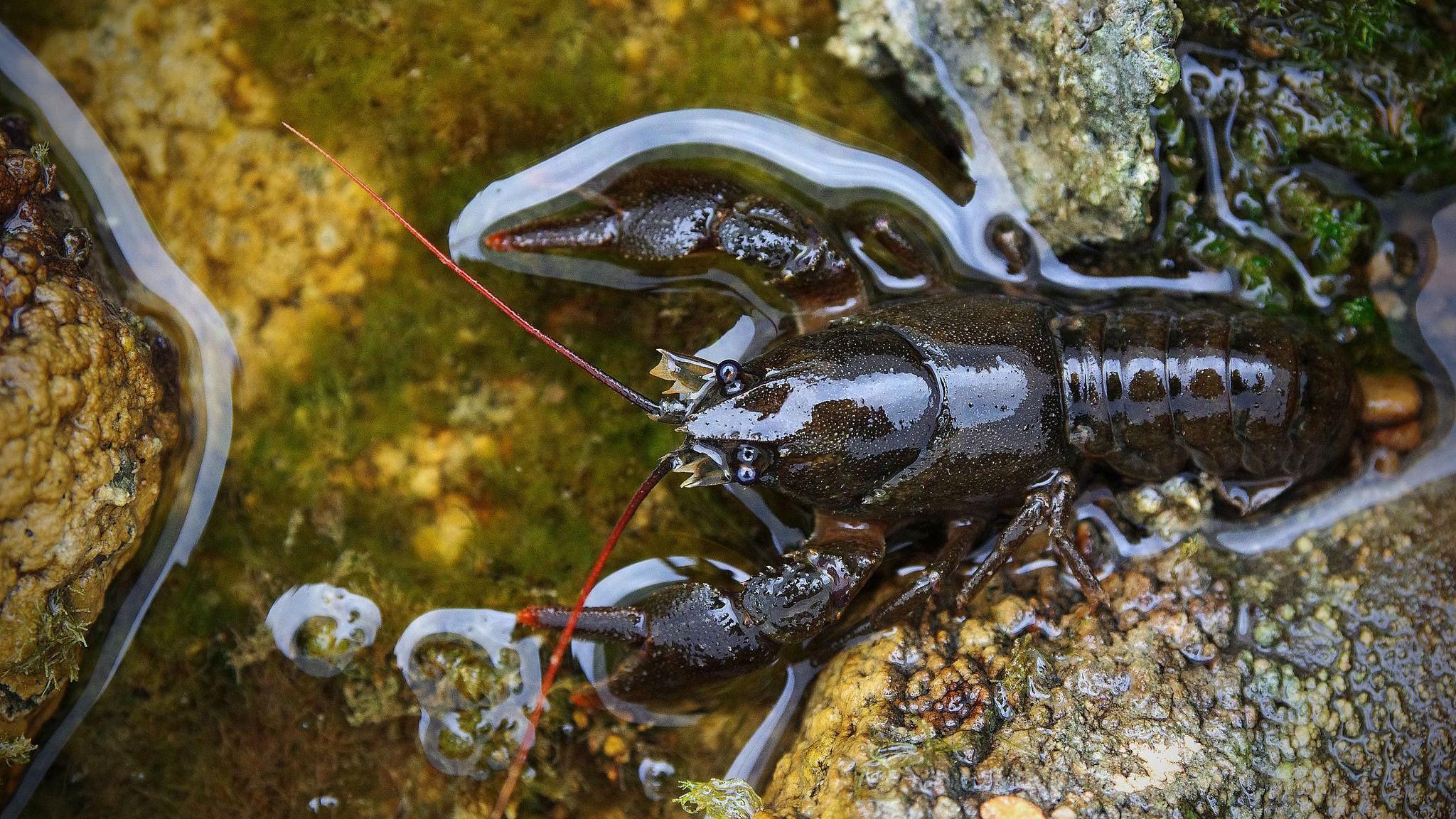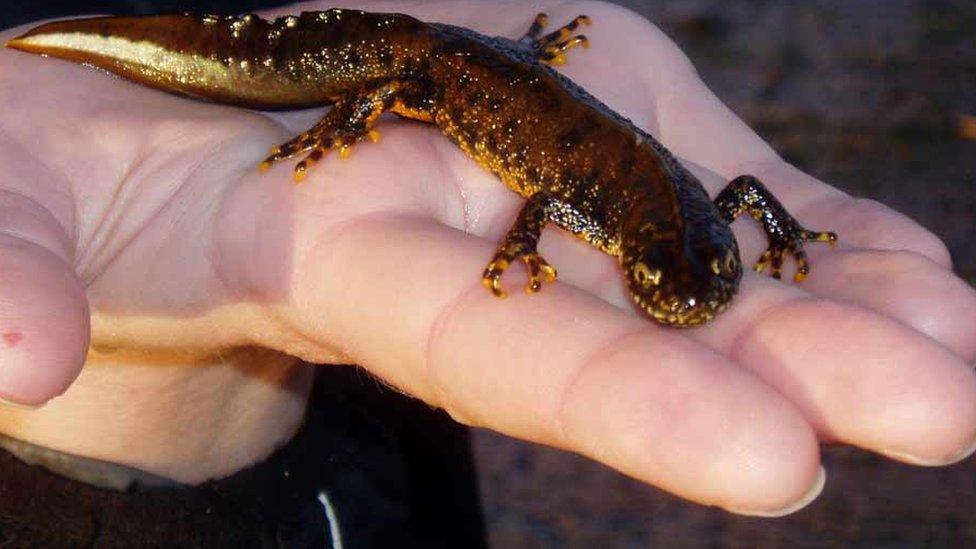Search for 'safe haven' for endangered crayfish

The white-clawed crayfish used to be common but is now endangered
- Published
Volunteers are being asked to help test water for the presence of water voles, mink and critically endangered white-clawed crayfish.
The Eden Rivers Trust said it was looking to find "safe havens", where crayfish in particular "might still thrive, free from invasive species", in the North Pennines fellsides.
Tests involve sending samples containing blood, poo, fur or skin cells to a laboratory to be analysed, with the aim of identifying all the species in a stretch of water.
The trust said the Eden catchment in Cumbria was "one of its last strongholds for white-clawed crayfish in England, but populations were rapidly declining due to water pollution and the invasive American signal crayfish".
The trust said the method of sampling, known as eDNA, did not disturb the habitat as much as traditional survey methods and was more cost-effective and quicker when sampling large areas.
Stephen Henderson, habitat and species manager at Eden Rivers Trust, said the processed involved "scooping water into a bag, shaking it to mix the DNA, then using a syringe to push it into a tube containing a filter".
"That filter captures DNA, which we send off for analysis. If white-clawed crayfish DNA is present, it suggests a population may be nearby," he added.

The trust said it wanted to determine the presence of water voles too
The white-clawed crayfish used to be common but have lost out to the larger, more aggressive American signal crayfish.
It was introduced for food in the late 1970s and 1980s, and carries a plague which affects only the white-clawed species.
The trust asked people interested in doing the surveys to get in touch, adding that the programme was almost filled for autumn but would open again in the spring.
"Dates and times will depend on a variety of factors, including weather and the availability of staff and volunteers," the trust added.
Follow BBC Cumbria on X, external, Facebook, external, Nextdoor and Instagram, external.
Get in touch
Do you have a story suggestion for BBC Cumbria?
Related topics
More like this
- Published24 February

- Published26 November 2015

- Published4 October
